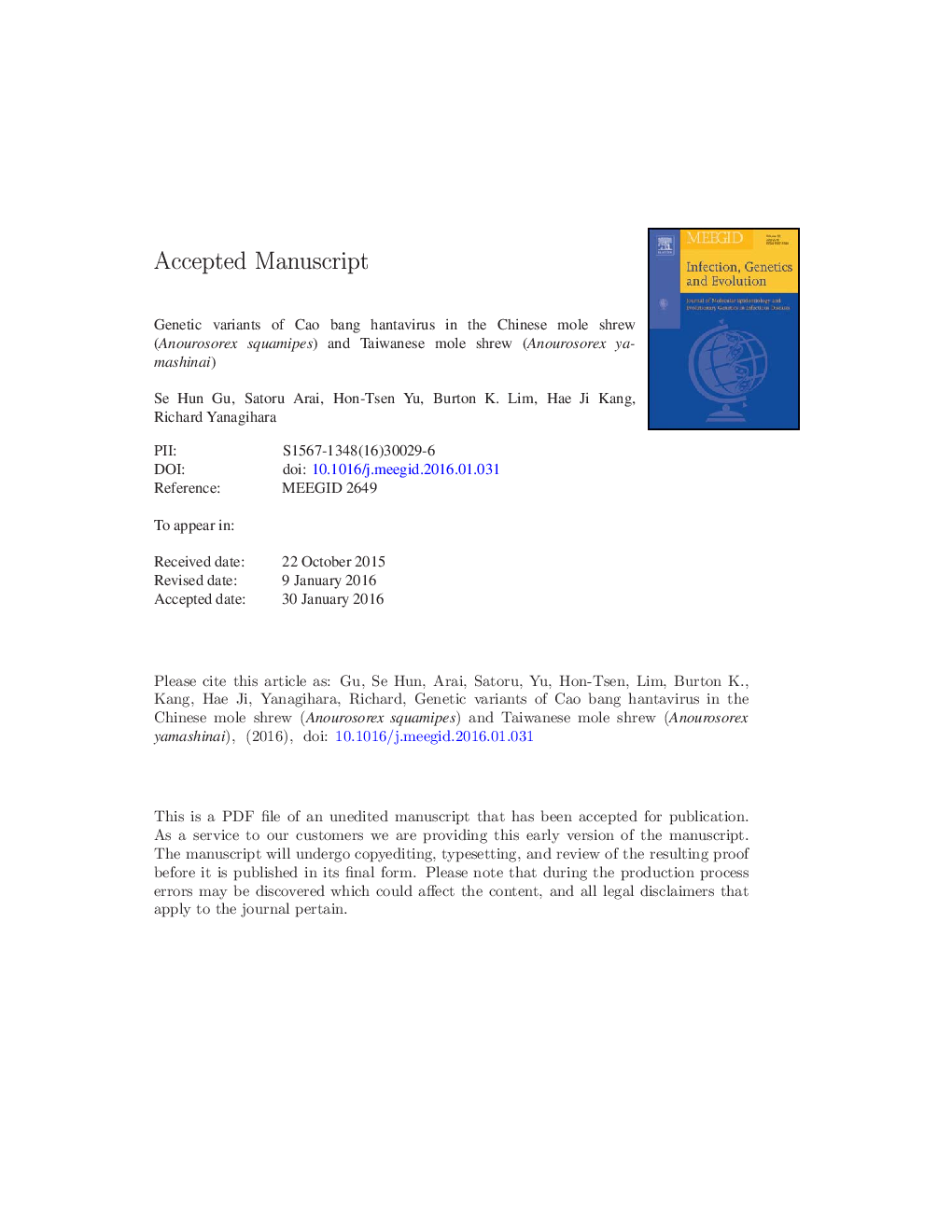| Article ID | Journal | Published Year | Pages | File Type |
|---|---|---|---|---|
| 5908300 | Infection, Genetics and Evolution | 2016 | 27 Pages |
Abstract
To determine the genetic diversity and geographic distribution of Cao Bang virus (CBNV) and to ascertain the existence of CBNV-related hantaviruses, natural history collections of archival tissues from Chinese mole shrews (Anourosorex squamipes) and Taiwanese mole shrews (Anourosorex yamashinai), captured in Guizho Province, People's Republic of China, and in Nantou County, Taiwan, in 2006 and 1989, respectively, were analyzed for hantavirus RNA by RT-PCR. Pair-wise alignment and comparison of the S-, M- and L-segment sequences indicated CBNV in two of five Chinese mole shrews and a previously unrecognized hantavirus, named Xinyi virus (XYIV), in seven of 15 Taiwanese mole shrews. XYIV was closely related to CBNV in Vietnam and China, as well as to Lianghe virus (LHEV), recently reported as a distinct hantavirus species in Chinese mole shrews from Yunnan Province in China. Phylogenetic analyses, using maximum-likelihood and Bayesian methods, showed that XYIV shared a common ancestry with CBNV and LHEV, in keeping with the evolutionary relationship between Anourosorex mole shrews. Until such time that tissue culture isolates of CBNV, LHEV and XYIV can be fully analyzed, XYIV and LHEV should be regarded as genetic variants, or genotypes, of CBNV.
Keywords
Related Topics
Life Sciences
Agricultural and Biological Sciences
Ecology, Evolution, Behavior and Systematics
Authors
Se Hun Gu, Satoru Arai, Hon-Tsen Yu, Burton K. Lim, Hae Ji Kang, Richard Yanagihara,
